Alcántara
Q996197Alcántara: site of a Roman bridge along the road from Cáceres (ancient Norba) to Condeixa-a-Velha (Conimbriga), one of the most famous pieces of Roman engineering.
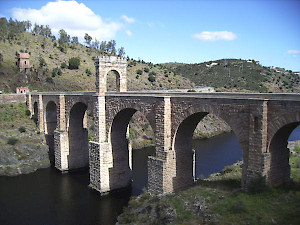
Sometimes, figures speak for themselves. Roman bridge at Alcántara has only six arches but is almost two hundred meter long (194 meter to be precise), and rises more than fifty meter above the river Tajo, the ancient Tagus. The road is eight meters wide. The piers are made of large blocks of natural stone, which are kept together with metal clamps. The master architect was a man named Gaius Julius Lacer, who was buried next to the monument he had built.
Halfway, there is an honorific arch, dedicated to the emperor Trajan (r.98-117). The inscription:
IMPeratori CAESARI DIVI NERVAE Filio NERVAE
TRAIANO AVGVSTO GERMANICO DACICO PONTIFici MAXimo
The use of the title Dacicus proves that the bridge was finished after 102, the year in which the emperor accepted this title. In 105 or 106, Trajan changed his title again, so that we can assume that the construction took place between 102 and 106.
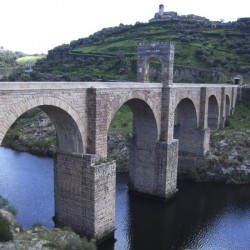 Alcántara bridge, view from the west |
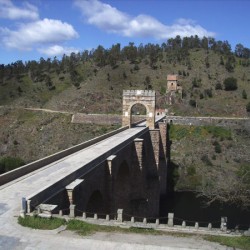 Alcántara bridge, view from the east |
 Alcántara bridge, arch, inscription () |
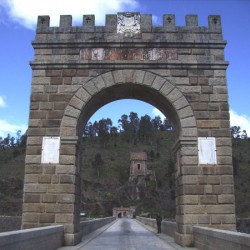 Alcántara bridge, arch |
On the southeastern bridgehead is a small temple, dedicated to an unidentified deity (perhaps the river Tagus). Here, Gaius Julius Lacer, the architect, was buried. The inscription on the temple, cut in a slab of marble that was restored during the reign of the Spanish king Philip IV (r.1621-1665), mentions the name of the architect, Gaius Julius Lacer, and informs us that the bridge was paid for by eleven Lusitanian municipalities.The inscription also expresses the hope that the building he had created would survive the centuries. It did.
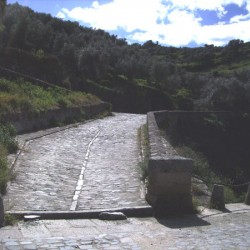 Alcántara bridge, pavement |
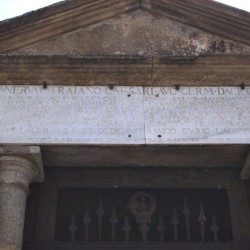 Alcántara bridge, shrine, inscription |
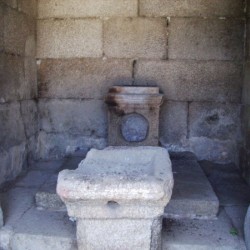 Alcántara bridge, shrine, interior |
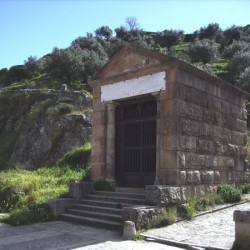 Alcántara bridge, shrine |